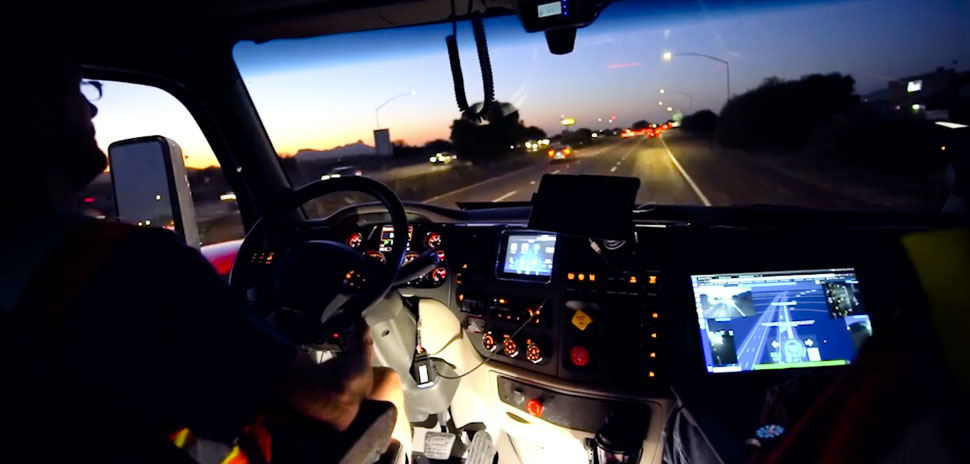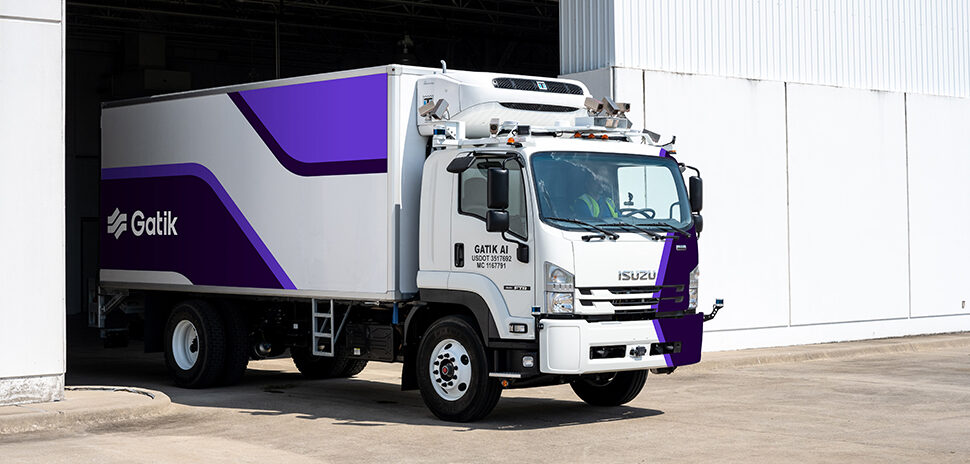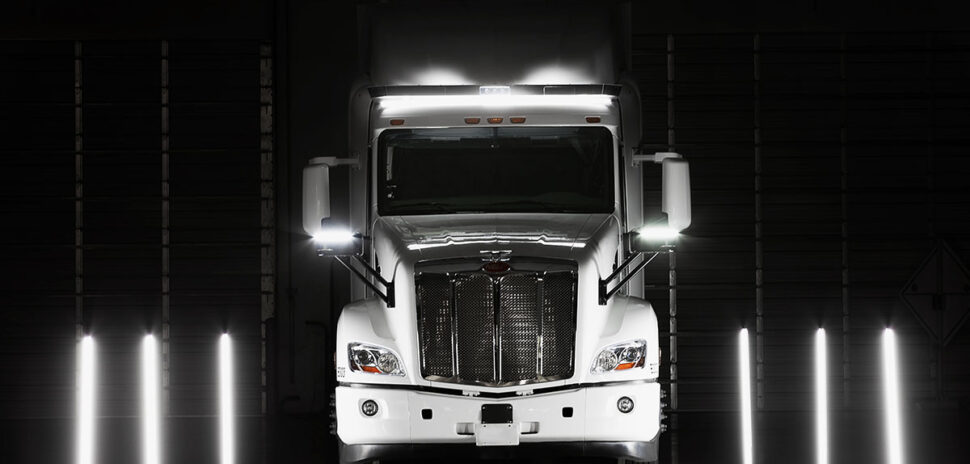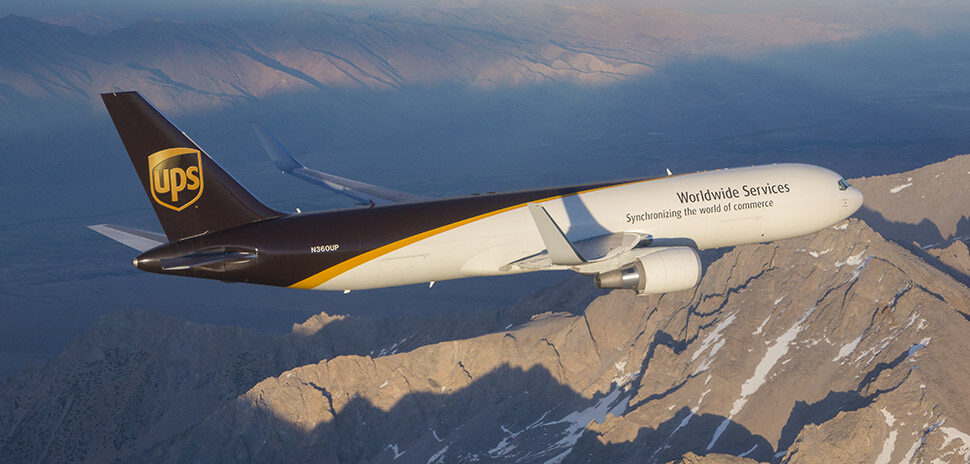Self-driving trucks could help eliminate supply-chain issues plaguing the U.S. right now and shore up the nationwide shortage of truck drivers. They could even reduce truck-accident rates substantially.
And Dallas-Fort Worth is ground zero for the development of autonomous truck technology, thanks to the cooperation of business leaders, and local, regional, and state governments.
Those are a few takeaways from the Oct. 28 Dallas Regional Chamber Autonomous Trucking Roundtable, presented by Deloitte. On hand for the virtual discussion were representatives from industry experts from Kodiak, Waymo, Aurora, Embark, and TuSimple. The discussion was moderated by Ashok Divakaran, strategy practice leader for Deloitte’s connected and autonomous vehicles practice.
The leaders dispelled the myth that self-driving trucks will eliminate the need for human drivers, and reinforced the notion that autonomous trucking technology is ready for deployment—it’s just a matter of public education and acceptance.

Deloitte’s Ashok Divakaran moderated the automated trucking roundtable, which included Kodiak’s Dan Goff, Waymo’s Annabel Chang, Aurora’s Gerardo Interiano, Embark’s Monika Darwish, and TuSimple’s Lee White.
Texas fully autonomous “first”
“Back in 2015, Texas was the site of the first fully autonomous ride on public roads, in the entire world, with Waymo,” said panelist Annabel Chang, head of state policy and governmental relations for Waymo. “That was on the passenger-hailing side, but that demonstrates where Texas has had a leadership position.”
Chang added that Texas’ location along the Interstate 10 corridor—which sweeps from Florida to California—makes it situated perfectly to help move freight across the entire country. She also said that the commitment from Texas and regional governments to autonomous transportation prompted Waymo to make Dallas its center of operations for the southern portion of the United States.
DFW takes the lead
Dallas-based Kodiak’s Daniel Goff spelled out the reasons DFW has become a fulcrum for autonomous trucking in the U.S.:
- DFW is second only to Chicago for the volume of freight that passes through the region;
- milder weather is more conducive for testing autonomous trucking technology; and
- the regulatory and business climate is extremely conducive for autonomous trucking.
“Dallas-Fort Worth really rolled out the red carpet for our industry, and really started to see the potential of this technology,” said Goff. “That goes to folks like Duane Dankesreiter, who we met over two years ago at the (Dallas Regional) Chamber … and the North Central Texas Council of Governments (NCTCOG), which has invested a ton of resources in this industry. Tom Bamonte has become one of the real leaders. TxDOT has been incredibly supportive with its connected autonomous vehicle task force.”
The industry needs “predictable governance”
Aurora’s Gerardo Interiano said the autonomous trucking industry needs predictable governance—issuing permits, setting regulations, fees, etc.—as it hones the technology, and his company has found that at all levels in Texas.
“When we show up and have conversations with these folks about what we’re doing, and what we need from them, their answer always is, ‘What is it that we can do to bring more jobs here and investment here to the community?’ And that’s music to our ears,” Interiano said.
Easing the pain of a truck driver shortage
Embark’s Monika Darwich said autonomous trucks will go a long way toward bridging the shortage of 80,000 truck drivers the country is facing.
“Lots of current drivers are aging, ready to retire within the next decade,” she said. “The number of people coming into the industry is not enough to fill that gap. When you look at the increasing demand of e-commerce, etc, on top of that, you need a solution for the supply chain to not completely collapse. Autonomous trucking is one small piece of that.”
TuSimple’s Lee White said self-driving trucks will likely fill the role of operating both mid-length and long-haul truck routes—operating at distances of 300, 700 miles, even 2,000 miles.
“It’s all helping with the pain points in the supply chain right now … and maximizing the most-valuable assets that they have, which are their drivers,” he said. “How do they continue to improve the work/life balance for them?”
Fully autonomous trucks on long haul routes will allow human truckers—who will operate locally—to return to their homes at night, he said.
From drawing board to the road
Aurora’s Gerardo Interiano handled the final question: How can autonomous trucks move from the drawing board to roads?
“We have the data and evidence to say we now believe the technology is safe,” he said.
In September, Aurora launched a pilot collaboration with FedEx, deploying autonomous trucks—with backup human drivers—to haul goods 500 miles from Dallas to Houston along the I-45 corridor.
“We could remove the human driver in Texas tomorrow,” Interiano said. “There’s nothing that prevents us from a regulatory perspective. But one of the things you’re getting into is the public acceptance. That is a component that we, as an industry, are responsible for. We are responsible for working with partners like the Chamber, like the (North Central Texas Council of Governments) … to show that this technology is safe. That’s why we’ve developed the safety-case framework, where there will be able to show the public and our partners that this technology is ready to be deployed and ready to be commercialized.”
Click here to view the entire discussion.
(Pro tip: Advance 30 minutes into the video for the panel.)








































































